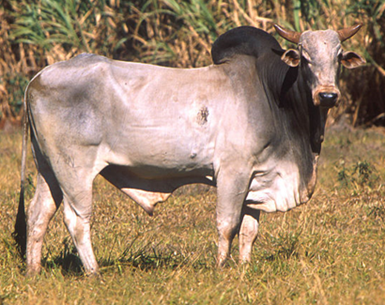Baker: The curious history of cows is a moving story

This year’s COP27 meetings in Sharm el-Sheikh has gotten me thinking about cows.
The controversial question of whether methane-belching cattle have a significant effect on global warming is a fascinating and important subject. But the back story of how cows got to be cows is intriguing in its own right.
According to the USDA’s Foreign Agriculture Service, in 2021 the country with the greatest number of cattle was India. With over 305 million animals, it alone accounted for over 30% of the world’s total population. Brazil was listed as home to another 25% of planet’s cattle, and China about 10%.
United States has nearly one-fourth of the world's cattle
The U.S. came in fourth, with some 93.6 million head of cattle, or about 9.4% of the world’s total bovine population of just over 1 billion animals.

In fact, it’s been estimated that with a worldwide mass of over 440 million tons, cattle outweigh all other species on the planet. (At around 411 million tons, humans come in third, just after Antarctic krill at 418 million tons.) Cows seem to be just about everywhere.
But it wasn’t always that way.
Although it’s difficult to think of the wide open plains of the West without bringing up the image of a cowboy tending his herd, there is no evidence cattle existed in the Western Hemisphere before Columbus brought a few animals from Europe to the Caribbean island of Hispanola on his second voyage across the Atlantic in 1493.
There also were no sheep, goats, pigs or horses. (Although the horse originated in North America, the species had gone extinct on the continent by about 11,000 years ago.)
In olden days of Aztecs, Incans, few animals were domesticated
In fact, when Hernan Cortés initiated his campaign against the Aztecs (of modern Mexico) in 1519 and Francisco Pizarro against the Incas (of modern Peru) in 1531, the only domesticated animals being kept by these indigenous groups were llamas, alpacas, turkeys, guinea pigs, Muscovy ducks, a stingless bee, a cochineal bug (used to make a red dye) and dogs.
It is simply mind-boggling the Incas built one of the greatest empires in human history — stretching 2,500 miles from Quito, Ecuador to beyond Santiago, Chile — without the use of the wheel, draft animals, iron, or a written language.
But getting back to cows. Both archeological and genetic studies show modern cattle are descended from a large bovine called the auroch (Bos primigenius) that measured 6 feet at the shoulder and sported massive horns nearly a yard in length. This is the magnificent beast depicted in the Paleolithic paintings of Lascaux cave in southwestern France.
Around 10,500 years ago, as humans were shifting from hunting and gathering to an agricultural way of life, people in two separate regions began what must have been the supremely hazardous task of domesticating the auroch.
On the Indian subcontinent, domestication ultimately led to the creation of zebu cattle, Bos indicus. In the Fertile Crescent region of the Middle East, domestication led to taurine cattle, Bos taurus. Zebu primarily are differentiated from taurine cattle by a distinctive fatty hump above the shoulders, a large dewlap hanging from the neck, and often drooping ears. They are well-adaptive to high temperatures and are widely distributed in tropical areas around the globe.
Most cattle are taurine breeds
The taurine breeds are better adapted to temperate climates and include most of the breeds with which Europeans and North Americans are most familiar like Herefords, Angus, Holsteins, Jerseys, and Shorthorns. Intriguingly, genetic analyses suggest all taurines stem from a population of about 80 aurochs in Mesopotamia, in the area that is now southeastern Turkey-northern Syria.
Although most authorities consider zebu and taurine cattle to be separate species, others view them as members of the same species since they freely interbreed with one another.
Over 1,000 breeds of cattle are recognized, with characteristics developed to address varying human needs in different regions of the world with quite distinct climatic, soil, and sociocultural conditions.
Do you know differences between cow, heifer, bull, steer, ox?
Technically, a cow is an adult female that has produced a calf, while a heifer is a young female that hasn’t. A bull is a male animal, a steer a castrated male and an ox is typically a castrated male that’s been trained for work like pulling a plow. While steers are generally killed for meat at 1-2 years, oxen are allowed to grow to adulthood at 4-5 years, after which they commonly experience a productive work life of another 10 years.
The last auroch died in a royal forest in Poland in 1627. But a great many of the species’ genes are still found today within the many breeds of both taurine and zebu cattle. It would be difficult to overstate the importance of the ages-long interactions between our own species and these grand descendents of Bos primigenius.
Next time, some thoughts on the economic, cultural, and environmental significance of cattle.
Ken Baker is a retired professor of biology and environmental studies. If you have a natural history topic you would like Dr. Baker to consider for an upcoming column, please email your idea to fre-newsdesk@gannett.com.
This article originally appeared on Fremont News-Messenger: Baker: The curious history of cows is a moving story
